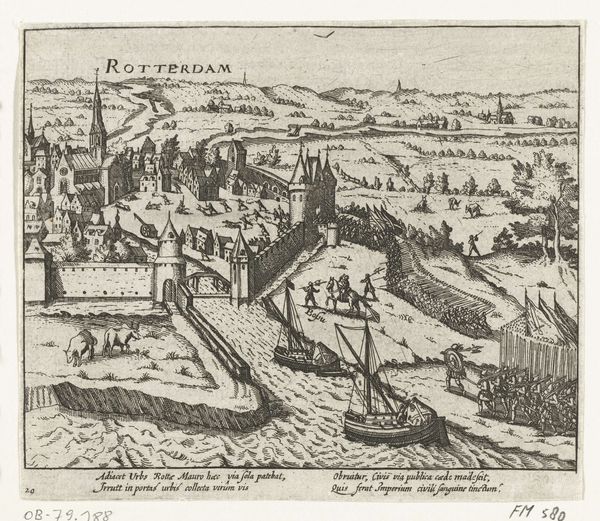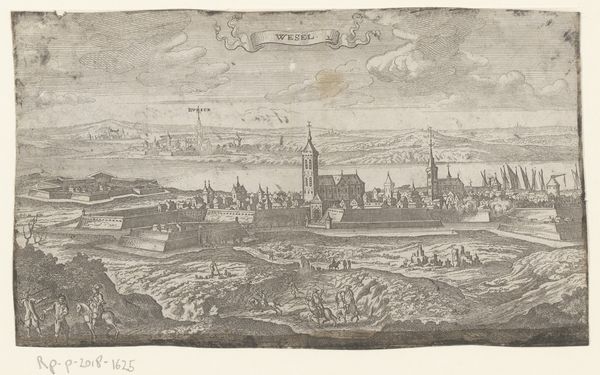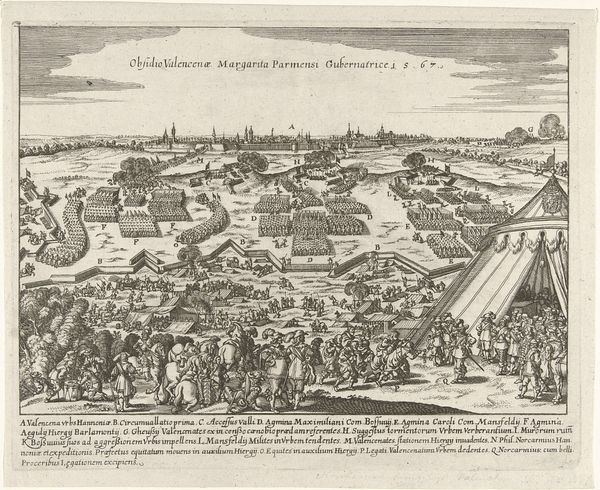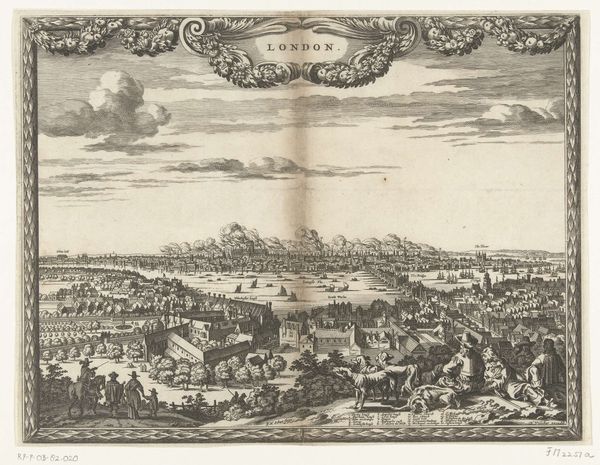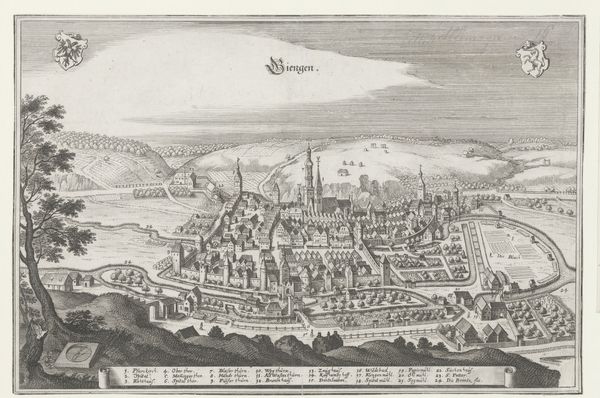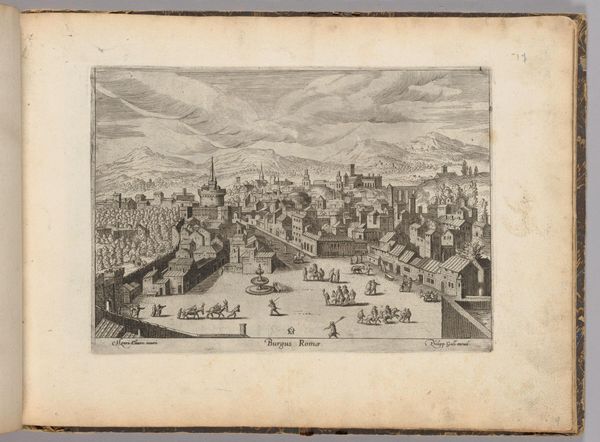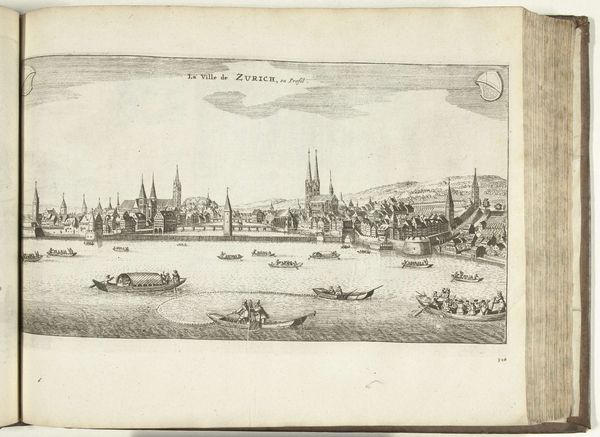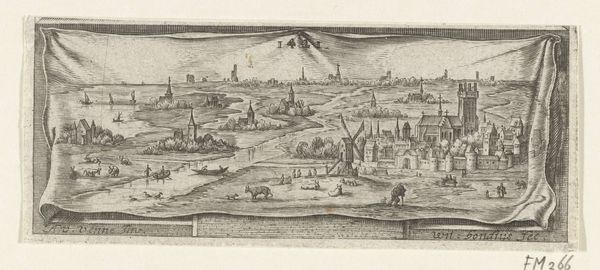
engraving
#
pen drawing
#
mechanical pen drawing
#
pen illustration
#
pen sketch
#
landscape
#
personal sketchbook
#
sketchwork
#
pen-ink sketch
#
pen work
#
sketchbook drawing
#
cityscape
#
northern-renaissance
#
sketchbook art
#
engraving
Dimensions: height 127 mm, width 476 mm
Copyright: Rijks Museum: Open Domain
Frans Hogenberg's 'Panorama van Leuven,' made around the late 16th century, presents a detailed bird's-eye view, crafted with fine lines and a monochromatic palette. The composition is neatly divided into zones: the foreground with figures, the midground with the fortified city, and the background fading into the landscape. The artwork's structure can be understood through the semiotic lens of cartography. Each element, from buildings to fortifications, acts as a signifier, conveying information about the city's structure and strategic importance. Hogenberg employs a system of visual codes to represent urban space, inviting the viewer to interpret the city as a text. Interestingly, the consistent detail and flat perspective challenge traditional notions of depth and realism, directing our attention to the overall pattern and design. The visual order imposed upon the scene invites reflection on the impulse to categorize and understand the world through structured representation.
Comments
No comments
Be the first to comment and join the conversation on the ultimate creative platform.
